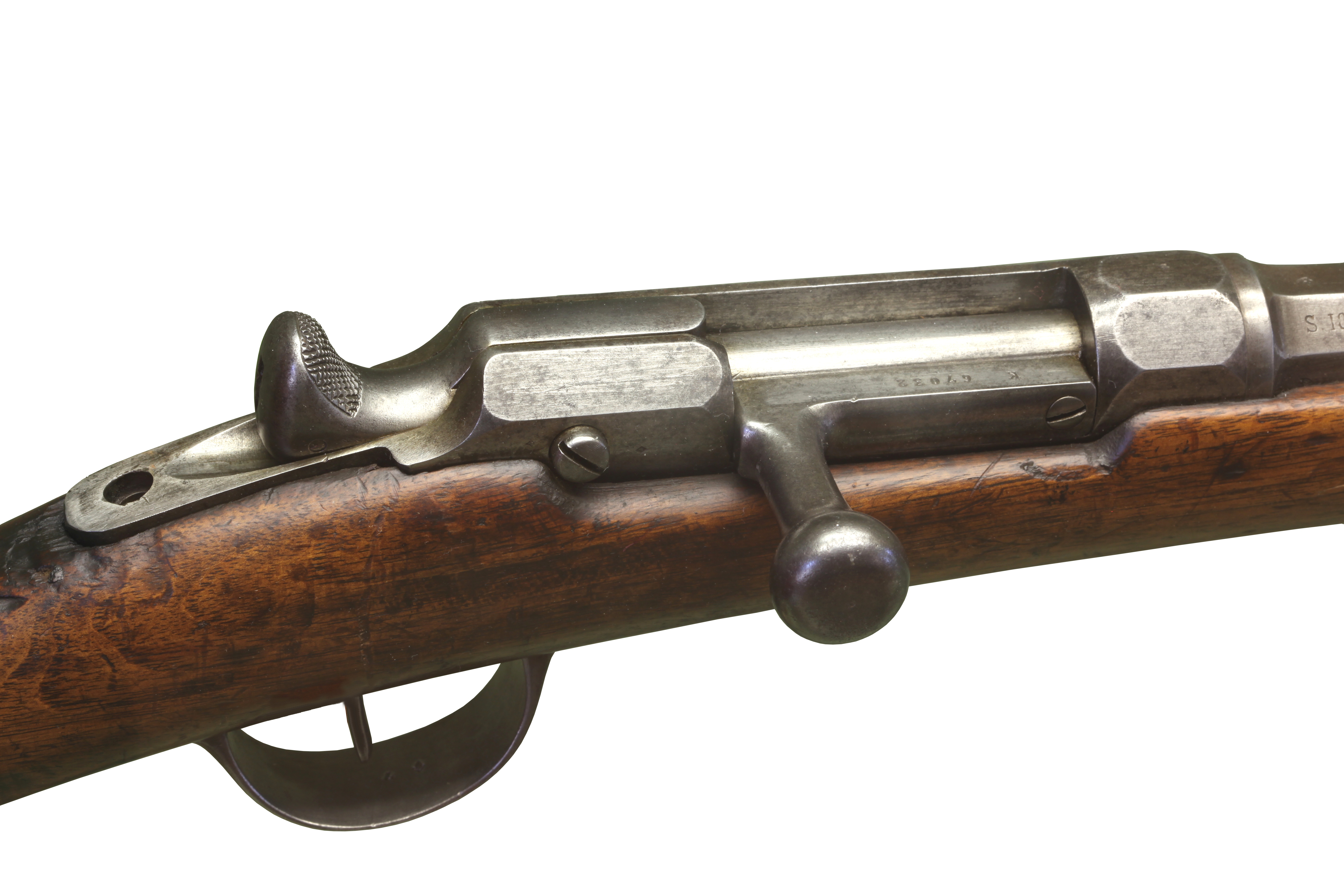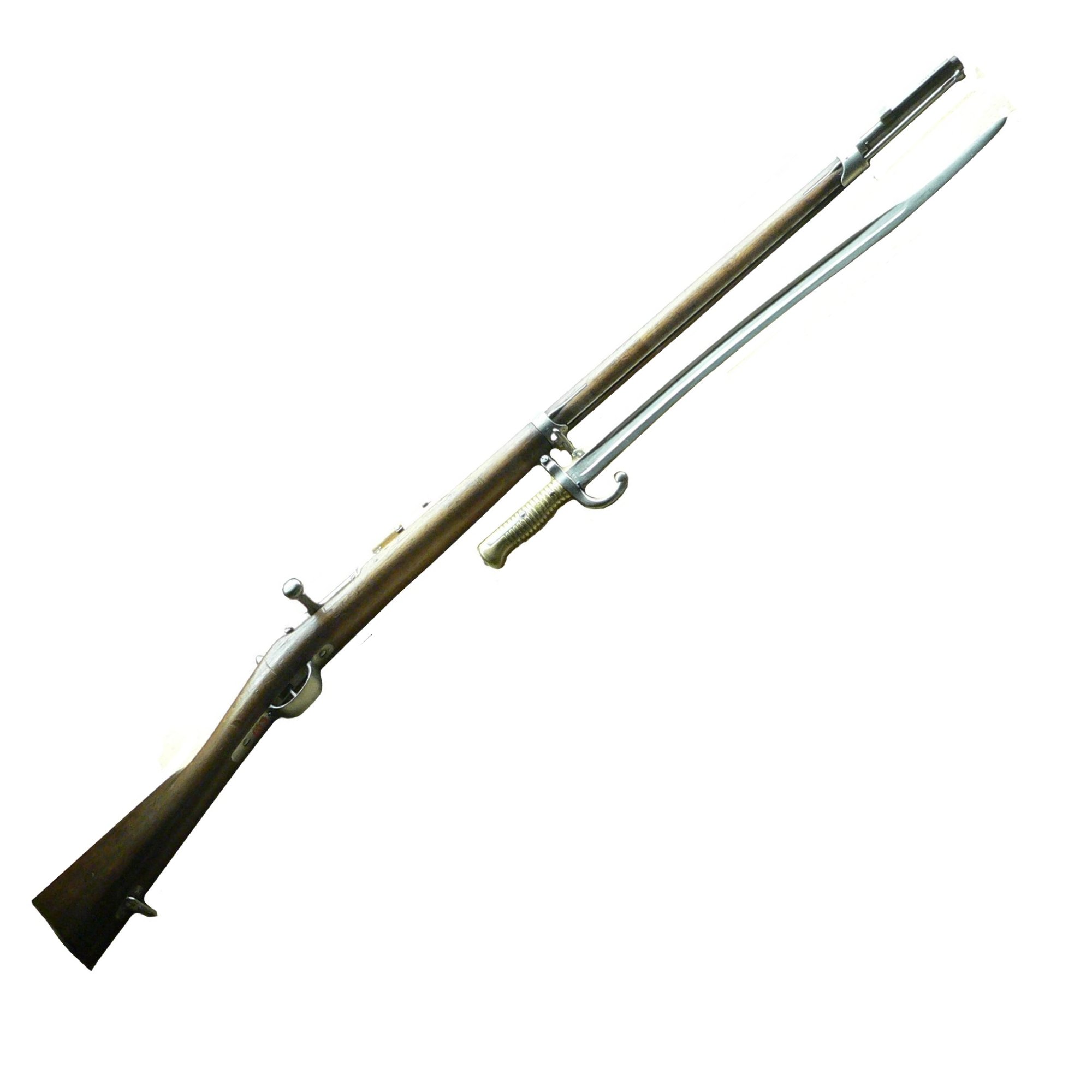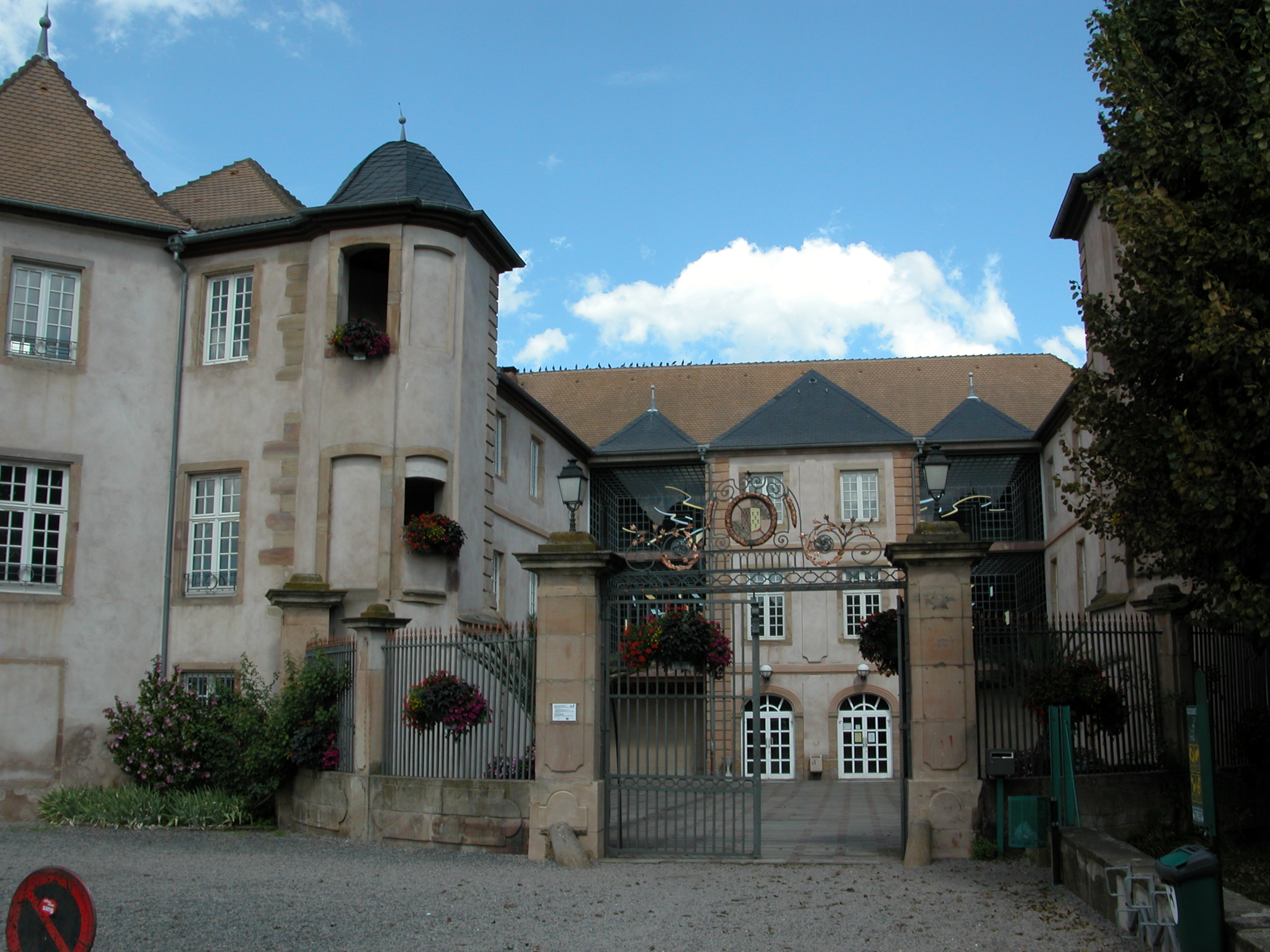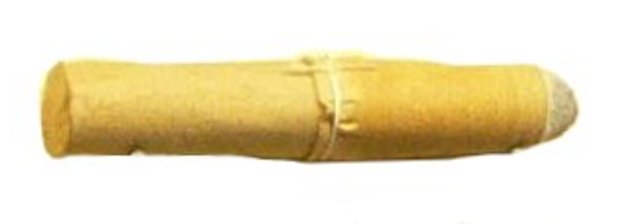|
Chassepot
The Chassepot (pronounced ''SHAS-poh''), officially known as ''Fusil modèle 1866'', was a bolt-action military breechloading rifle. It is famous for having been the arm of the French forces in the Franco-Prussian War of 1870–1871. It replaced an assortment of Minié muzzleloading rifles, many of which were converted in 1864 to breech loading (the Tabatière rifles). An improvement to existing military rifles in 1866, the Chassepot marked the commencement of the era of modern bolt action, breech-loading military rifles. The Gras rifle was an adaption of the Chassepot designed to fire metallic cartridges introduced in 1874. It was manufactured by '' Manufacture d'armes de Saint-Étienne'' (MAS), '' Manufacture d'Armes de Châtellerault'' (MAC), ''Manufacture d'Armes de Tulle'' (MAT) and, until 1870, in the ''Manufacture d'Armes de Mutzig'' in the former Château des Rohan. Many were also manufactured under contract in England (the "Potts et Hunts" Chassepots delivered to t ... [...More Info...] [...Related Items...] OR: [Wikipedia] [Google] [Baidu] |
Needle Gun
A needle gun (or needle rifle for varieties with rifling) is a firearm that has a needle-like firing pin, which can pass through the paper cartridge case to strike a percussion cap at the bullet base. Types Pauly A diagram of a needle-gun cartridge, showing the paper cartridge case, the sabot, and acorn-shaped bullet. The first experimental needle gun was designed by Jean Samuel Pauly, a Swiss gunsmith. In Paris in 1808, in association with French gunsmith François Prélat, Pauly created the first fully self-contained cartridges: the cartridges incorporated a copper base with integrated mercury fulminate primer powder (the major innovation of Pauly), a round bullet and either brass or paper casing. The cartridge was loaded through the breech and fired with a needle. The needle-activated central-fire breech-loading gun became a major feature of firearms thereafter. The corresponding firearm was also developed by Pauly. Pauly made an improved version which was protected b ... [...More Info...] [...Related Items...] OR: [Wikipedia] [Google] [Baidu] |
Antoine Alphonse Chassepot
Antoine Alphonse Chassepot (1833–1905) was a French inventor and gunsmith. Born in 1833 in the town of Mutzig in Alsace, he is best known for inventing the breech-loading, center-fire needle gun rifle named after him: the Chassepot. Officially known as the ''Fusil modèle 1866'', the rifle was adopted by the French army in 1866, for which Chassepot received the Cross of the Légion d'honneur and a gratuity of 30,000 francs The franc is any of various units of currency. One franc is typically divided into 100 centimes. The name is said to derive from the Latin inscription ''francorum rex'' (King of the Franks) used on early French coins and until the 18th centu .... References 1833 births 1905 deaths 19th-century French inventors 19th-century French engineers Firearm designers {{France-engineer-stub ... [...More Info...] [...Related Items...] OR: [Wikipedia] [Google] [Baidu] |
Château Des Rohan (Mutzig)
The Château des Rohan ("Castle of the Rohan") is a former castle and weapons factory now serving as a museum and cultural centre in the French town of Mutzig, Bas-Rhin, Alsace. The castle, whose structure goes back to the 13th century, belonged to several families of noblemen and bishops of Strasbourg before being turned into a rifle factory after the French Revolution. The castle is most famously associated with the House of Rohan and the Chassepot rifle. History Mutzig's castle's history goes back to the fortification of the town in 1274 by Rudolph of Habsburg. The medieval castle, a ''Wasserburg'' (i.e. surrounded by a moat derived from a canal) was heavily destroyed by the Swedes in 1632, during the Thirty Years' War, after having already been assaulted by Ernst von Mansfeld's troops in 1622. The city's and castle's masters, during these times marked by frequent battles and rivalries between feudal families, were alternatively and sometimes simultaneously the bishops of Stra ... [...More Info...] [...Related Items...] OR: [Wikipedia] [Google] [Baidu] |
Fusil Gras Mle 1874
The Fusil Modèle 1874 or Gras was the French Army's primary service rifle from 1874 to 1886. Designed by Colonel Basile Gras, the Gras was a metallic cartridge adaptation of the single-shot, breech-loading, black powder Chassepot rifle. It was developed from 1872 to 1874 as a response to the German adoption of the Mauser Model 1871 metallic cartridge rifle. Modified in 1880 as the M80 with an improved breechblock and in 1914 as the M14 to accommodate the 8×50mmR Lebel smokeless powder cartridge, the Gras was replaced as the standard-issue service rifle by the Lebel in 1886. Description Converted from the Chassepot, the Gras was in caliber and used black powder centerfire metallic cartridges with a bullet over a charge. It was a robust and hard-hitting single-shot weapon. Additionally it had a triangular-shaped Model 1874 "Gras" sword bayonet. The Gras rifle was replaced from 1886 by the Lebel rifle. Development The Gras was manufactured in response to the develo ... [...More Info...] [...Related Items...] OR: [Wikipedia] [Google] [Baidu] |
Manufacture D'armes De Saint-Étienne
The ''Manufacture d'Armes de Saint-Étienne'', often abbreviated to MAS ("Saint-Étienne Weapons Factory" in English) was a French state-owned weapons manufacturer in the town of Saint-Étienne, Loire. Founded in 1764, it was merged into the French state-owned defense conglomerate GIAT Industries in 2001. History Saint-Étienne was well-known as a center of sword and knife manufacturing beginning in the Middle Ages. In 1665, a Royal Arms Depot was created in Paris to store military weapons made in Saint-Étienne. The ''Manufacture d'Armes de Saint-Étienne'' was created by royal decree in 1764 under the supervision of the General Inspector of the Royal Arms Manufacture of Charleville. 12,000 weapons were being produced each year when the French Revolution The French Revolution ( ) was a period of radical political and societal change in France that began with the Estates General of 1789 and ended with the formation of the French Consulate in coup of 18 Bruma ... [...More Info...] [...Related Items...] OR: [Wikipedia] [Google] [Baidu] |
War Of The Pacific
The War of the Pacific ( es, link=no, Guerra del Pacífico), also known as the Saltpeter War ( es, link=no, Guerra del salitre) and by multiple other names, was a war between Chile and a Bolivian–Peruvian alliance from 1879 to 1884. Fought over Chilean claims on coastal Bolivian territory in the Atacama Desert, the war ended with a Chilean victory, which gained for the country a significant amount of resource-rich territory from Peru and Bolivia. The war began over a nitrate taxation dispute between Bolivia and Chile, with Peru being drawn in due to its secret alliance with Bolivia. But historians have pointed to deeper origins of the war, such as the interest of Chile and Peru in the nitrate business, the long-standing rivalry between Chile and Peru, as well as political and economical disparities between Chile, Peru and Bolivia. On February 14, 1879, Chile's armed forces occupied the Bolivian port city of Antofagasta, subsequently war between Bolivia and Chile was decl ... [...More Info...] [...Related Items...] OR: [Wikipedia] [Google] [Baidu] |
Rifle
A rifle is a long-barreled firearm designed for accurate shooting, with a barrel that has a helical pattern of grooves ( rifling) cut into the bore wall. In keeping with their focus on accuracy, rifles are typically designed to be held with both hands and braced firmly against the shooter's shoulder via a buttstock for stability during shooting. Rifles are used extensively in warfare, law enforcement, hunting, shooting sports, and crime. The term was originally ''rifled gun'', with the verb ''rifle'' referring to the early modern machining process of creating groovings with cutting tools. By the 20th century, the weapon had become so common that the modern noun ''rifle'' is now often used for any long-shaped handheld ranged weapon designed for well-aimed discharge activated by a trigger (e.g., personnel halting and stimulation response rifle, which is actually a laser dazzler). Like all typical firearms, a rifle's projectile ( bullet) is propelled by the contained ... [...More Info...] [...Related Items...] OR: [Wikipedia] [Google] [Baidu] |
Paper Cartridge
A paper cartridge is one of various types of small arms ammunition used before the advent of the metallic cartridge. These cartridges consisted of a paper cylinder or cone containing the bullet, gunpowder, and in some cases, a primer or a lubricating and anti-fouling agent. Combustible cartridges are paper cartridges that use paper treated with oxidizers to allow them to burn completely upon ignition. History Paper cartridges have been in use for nearly as long as hand-held firearms, with a number of sources dating their use back to the late 14th century. Historians note their use by soldiers of Christian I in 1586, while the Dresden museum has evidence dating their use to 1591, and Capo Bianco writes in 1597 that paper cartridges had long been in use by Neapolitan soldiers. Their use became widespread by the 17th century. The first army to officially use paper cartridges is presumed to be "piechota wybraniecka" of Poland under the rule of Stephen Báthory. Cultural impact ... [...More Info...] [...Related Items...] OR: [Wikipedia] [Google] [Baidu] |
Tabatière Rifle
The Tabatière rifle was a breech-loading rifle of the French Army. The Tabatière system was developed from 1864 as a way to convert numerous muzzle-loading weapons (usually Minié rifles) into breech-loading ones, in a process similar to that of the Snider-Enfield in Great Britain or the Springfield Model 1866 in the United States. The name "Tabatière" comes from the fact that the breech-loading mechanism looked like a snuff box.Stephen Shan''French Army 1870–71 Franco-Prussian War (2)'', p. 38/ref> Most of the conversion work had been accomplished by the time of the Franco-Prussian War. By July 1870, roughly 358,000 rifles had been converted, while 1.4 million muzzleloaders stayed in their original configuration. The ammunition was a center fire cartridge closely resembling a shortened 12 gauge shotgun shell. This weapon system was recognized as ballistically inferior to the Chassepot rifle, therefore it was used by second line troops and in defensive roles. These a ... [...More Info...] [...Related Items...] OR: [Wikipedia] [Google] [Baidu] |
Boshin War
The , sometimes known as the Japanese Revolution or Japanese Civil War, was a civil war in Japan fought from 1868 to 1869 between forces of the ruling Tokugawa shogunate and a clique seeking to seize political power in the name of the Imperial Court. The war stemmed from dissatisfaction among many nobles and young samurai with the shogunate's handling of foreigners following the opening of Japan during the prior decade. Increasing Western influence in the economy led to a decline similar to that of other Asian countries at the time. An alliance of western samurai, particularly the domains of Chōshū, Satsuma, and Tosa, and court officials secured control of the Imperial Court and influenced the young Emperor Meiji. Tokugawa Yoshinobu, the sitting ''shōgun'', realizing the futility of his situation, abdicated and handed over political power to the emperor. Yoshinobu had hoped that by doing this the House of Tokugawa could be preserved and participate in the future gov ... [...More Info...] [...Related Items...] OR: [Wikipedia] [Google] [Baidu] |
Kingdom Of Dahomey
The Kingdom of Dahomey () was a West African kingdom located within present-day Benin that existed from approximately 1600 until 1904. Dahomey developed on the Abomey Plateau amongst the Fon people in the early 17th century and became a regional power in the 18th century by expanding south to conquer key cities like Whydah belonging to the Kingdom of Whydah on the Atlantic coast which granted it unhindered access to the tricontinental triangular trade. For much of the middle 19th century, the Kingdom of Dahomey became a key regional state, after eventually ending tributary status to the Oyo Empire. European visitors extensively documented the kingdom, and it became one of the most familiar African nations to Europeans. The Kingdom of Dahomey was an important regional power that had an organized domestic economy built on conquest and slave labor, significant international trade and diplomatic relations with Europeans, a centralized administration, taxation systems, and an org ... [...More Info...] [...Related Items...] OR: [Wikipedia] [Google] [Baidu] |
Breechloader
A breechloader is a firearm in which the user loads the ammunition ( cartridge or shell) via the rear (breech) end of its barrel, as opposed to a muzzleloader, which loads ammunition via the front ( muzzle). Modern firearms are generally breech-loading – except for replicas of vintage weapons. Early firearms before the mid-19th century were almost entirely muzzle-loading. Mortars and the Russian GP-25 grenade launcher are the only muzzleloaders remaining in frequent modern usage. However, referring to a weapon specifically as breech loading is mostly limited to single-shot or otherwise non-repeating firearms, such as double-barreled shotguns. Breech-loading provides the advantage of reduced reloading time, because it is far quicker to load the projectile and propellant into the chamber of a gun/cannon than to reach all the way over to the front end to load ammunition and then push them back down a long tube – especially when the projectile fits tightly an ... [...More Info...] [...Related Items...] OR: [Wikipedia] [Google] [Baidu] |











